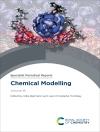The first IUPAC Manual of Symbols and Terminology for Physicochemical Quantities and Units (the Green Book) of which this is the direct successor, was published in 1969, with the object of ‘securing clarity and precision, and wider agreement in the use of symbols, by chemists in different countries, among physicists, chemists and engineers, and by editors of scientific journals’. Subsequent revisions have taken account of many developments in the field, culminating in the major extension and revision represented by the 1988 edition under the simplified title Quantities, Units and Symbols in Physical Chemistry. This 2007, Third Edition, is a further revision of the material which reflects the experience of the contributors with the previous editions. The book has been systematically brought up to date and new sections have been added. It strives to improve the exchange of scientific information among the readers in different disciplines and across different nations. In a rapidly expanding volume of scientific literature where each discipline has a tendency to retreat into its own jargon this book attempts to provide a readable compilation of widely used terms and symbols from many sources together with brief understandable definitions. This is the definitive guide for scientists and organizations working across a multitude of disciplines requiring internationally approved nomenclature.
Mục lục
CONTENTS: PREFACE;
HISTORICAL INTRODUCTION;
1 PHYSICAL QUANTITIES AND UNITS: 1.1 Physical quantities and quantity calculus;
1.2 Base quantities and derived quantities;
1.3 Symbols for physical quantities and units;
1.3.1 General rules for symbols for quantities;
1.3.2 General rules for symbols for units;
1.4 Use of the words “extensive”, “intensive”, “specific”, and “molar”;
1.5 Products and quotients of physical quantities and units;
1.6 The use of italic and Roman fonts for symbols in scientific publications;
2TABLES OF PHYSICAL QUANTITIES: 2.1 Space and time;
2.2 Classical mechanics;
2.3 Electricity and magnetism;
2.4 Quantum mechanics and quantum chemistry;
2.4.1 Ab initio Hartree-Fock self-consistent field theory (ab initio SCF);
2.4.2 Hartree-Fock-Roothaan SCF theory, using molecular orbitals expanded as linear combinations of atomic-orbital basis functions (LCAO-MO theory);
2.5 Atoms and molecules;
2.6 Spectroscopy;
2.6.1 Symbols for angular momentum operators and quantum numbers;
2.6.2 Symbols for symmetry operators and labels for symmetry species;
2.6.3 Other symbols and conventions in optical spectroscopy;
2.7 Electromagnetic radiation;
2.7.1 Quantities and symbols concerned with the measurement of absorption intensity;
2.7.2 Conventions for absorption intensities in condensed phases;
2.8 Solid state;
2.8.1 Symbols for planes and directions in crystals;
2.9 Statistical thermodynamics;
2.10 General chemistry;
2.10.1 Other symbols and conventions in chemistry;
2.11 Chemical thermodynamics;
2.11.1 Other symbols and conventions in chemical thermodynamics;
2.12 Chemical kinetics and photochemistry;
2.12.1 Other symbols, terms, and conventions used in chemical kinetics;
2.13 Electrochemistry;
2.13.1 Sign and notation conventions in electrochemistry;
2.14 Colloid and surface chemistry;
2.14.1 Surface structure;
2.15 Transport properties;
2.15.1 Transport characteristic numbers: Quantities of dimension one;
3 DEFINITIONS AND SYMBOLS FOR UNITS: 3.1 The International System of Units (SI);
3.2 Names and symbols for the SI base units;
3.3 Definitions of the SI base units;
3.4 SI derived units with special names and symbols;
3.5 SI derived units for other quantities;
3.6 SI prefixes and prefixes for binary multiples;
3.7 Non-SI units accepted for use with the SI;
3.8 Coherent units and checking dimensions;
3.9 Fundamental physical constants used as units;
3.9.1 Atomic units;
3.9.2 The equations of quantum chemistry expressed in terms of reduced quantities using atomic units;
3.10 Dimensionless quantities;
3.10.1 Fractions (relative values, yields, and efficiencies);
3.10.2 Deprecated usage;
3.10.3 Units for logarithmic quantities: neper, bel, and decibel;
4RECOMMENDED MATHEMATICAL SYMBOLS: 4.1 Printing of numbers and mathematical symbols;
4.2 Symbols, operators, and functions;
5 FUNDAMENTAL PHYSICAL CONSTANTS: 6 PROPERTIES OF PARTICLES, ELEMENTS, AND NUCLIDES: 6.1 Properties of selected particles;
6.2 Standard atomic weights of the elements 2005;
6.3 Properties of nuclides;
7 CONVERSION OF UNITS: 7.1 The use of quantity calculus;
7.2 Conversion tables for units;
7.3 The esu, emu, Gaussian, and atomic unit systems in relation to the SI;
7.4 Transformation of equations of electromagnetic theory between the ISQ(SI) and Gaussian forms;
8UNCERTAINTY: 8.1 Reporting uncertainty for a single measured quantity;
8.2 Propagation of uncertainty for uncorrelated measurements;
8.3 Reporting uncertainties in terms of confidence intervals;
9 ABBREVIATIONS AND ACRONYMS: 10 REFERENCES: 10.1 Primary sources;
10.2 Secondary sources;
11 GREEK ALPHABET: 12 INDEX OF SYMBOLS: 13 SUBJECT INDEX: NOTES: PRESSURE CONVERSION FACTORS: NUMERICAL ENERGY CONVERSION FACTORS: IUPAC PERIODIC TABLE OF THE ELEMENTS;












